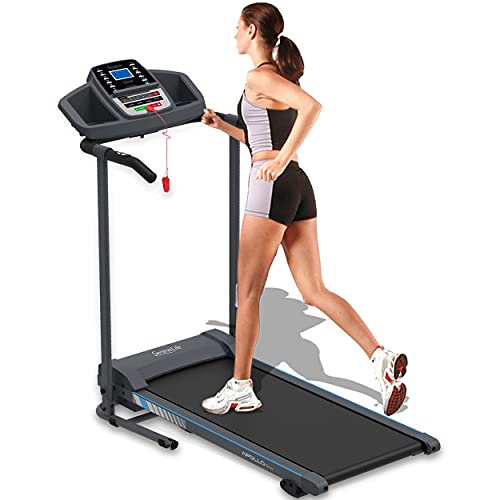Non-Electric Walking Pads: The Future of At-Home Fitness
In the age of digitalization and automation, it may appear counterintuitive to go back to a more standard and mechanical approach to fitness. Nevertheless, non-electric walking pads have emerged as an increasing popular choice for individuals looking for a sustainable, simple alternative for maintaining their physical health without depending on technology. In this blog post, we will explore the benefits, functions, and factors to consider surrounding non-electric walking pads, eventually making the case for their location in modern fitness programs.
What is a Non-Electric Walking Pad?
A non-electric walking pad is a manually run treadmill that needs no source of power other than the force created by the user's movement. These devices are created to accommodate walking and jogging, making them suitable for both light workouts and more extreme workouts-- while removing the necessity for electricity.
Secret Features of Non-Electric Walking Pads
| Function | Description |
|---|---|
| Manual Operation | Moves with the user's weight and movement. |
| Foldable Design | Easy to keep and carry. |
| Adjustable Incline | Enables users to customize the exercise intensity. |
| Space-Efficient | Suitable for small home. |
| Resilience | Built with robust materials for longevity. |
| Budget friendly | Lower initial financial investment than electric models. |
Advantages of Non-Electric Walking Pads
Non-electric walking pads come with a selection of advantages that make them a desirable choice for lots of fitness enthusiasts. Here are a few of the main advantages:
1. Eco-Friendly
Among the most engaging reasons to select a non-electric walking pad is that it needs no electricity. In hometreadmills.uk where environmental impact is a major concern, utilizing less energy contributes to sustainability.
2. Economical
Non-electric walking pads are generally cheaper to manufacture and buy than their electric counterparts. They also get rid of continuous electricity expenses. For users trying to find an economical way to stay fit at home, this is a substantial benefit.
3. Enhanced Stability and Safety
Because non-electric walking pads normally have a lower speed, users have greater control over their pace. This makes them more secure for those who may deal with balance or coordination, such as the elderly.
4. Low Maintenance
Manual walking pads need very little maintenance compared to electric models, which might require regular maintenance and periodic part replacements. This dependability can be a plus for busy people.
5. Versatile Workouts
Many designs offer adjustable inclines that permit users to boost their exercises. This function means that anyone can customize their workout regimen to satisfy their specific objectives, whether it's weight reduction or endurance training.
Elements to Consider Before Purchasing
| Element | Description |
|---|---|
| Size | Guarantee it fits your designated workout area. |
| Weight Capacity | Examine the optimum user weight to make sure toughness. |
| Incline Levels | Determine the number of incline levels suitable for your physical fitness objectives. |
| Portability | Assess how simple it is to move and keep. |
| Develop Quality | Choose for long lasting products to make sure longevity. |
1. Size Matters
Before purchasing, consider where the walking pad will be used. Ensure it fits comfortably in your desired space, allowing sufficient room for safe movement.
2. Know Your Weight Capacity
The majority of walking pads featured a particular weight limit. Make sure to validate that it can safely support your weight for extended usage.
3. Think About Incline Levels
If you prepare part of your physical fitness program around incline training, check out designs that offer multiple incline levels for different strength.
4. Examine Portability
If you have limited area, look for foldable models that can be quickly kept away when not in use.
5. Concentrate On Build Quality
A well-constructed walking pad will extend the life of your devices. Select designs with positive user examines about toughness and quality.
Often Asked Questions
1. Are non-electric walking pads easy to use?
Yes, they are straightforward to run-- you merely step onto the pad and start walking! The motion of walking produces the movement.
2. What is the weight limit for non-electric walking pads?
Weight limits vary by model, typically ranging from 200 to 350 pounds. Constantly examine the specs before buying.
3. Is it suitable for individuals of all ages?
Typically, yes-- it is more secure for older grownups due to its lower speed. Nevertheless, as with any workout program, individuals ought to consult a physician before starting.
4. How does a non-electric walking pad compare to a standard treadmill?
Although both serve similar purposes, non-electric walking pads are cheaper, quieter, and energy-efficient. Standard treadmills use sophisticated features like digital display screens and pre-programmed workout programs however included higher costs and maintenance.
5. Can you operate on a non-electric walking pad?
Yes, numerous designs permit for light running as well as walking. However, the experience might vary from electric treadmills, as users need to create their movement.
Non-electric walking pads represent a useful, sustainable, and economical option for those aiming to remain active while reducing their environmental footprint. With the capability to deliver efficient workouts with low upkeep expenses, these walking pads might just be the best fit for people and households seeking a no-fuss method to fitness.
As the marketplace for fitness continues to evolve, non-electric walking pads are a suggestion that simple services can frequently supply a few of the very best results. Whether you are a newbie, a seasoned physical fitness enthusiast, or someone wanting to present regular motion into your lifestyle, purchasing a non-electric walking pad can be a sensible and useful option.

